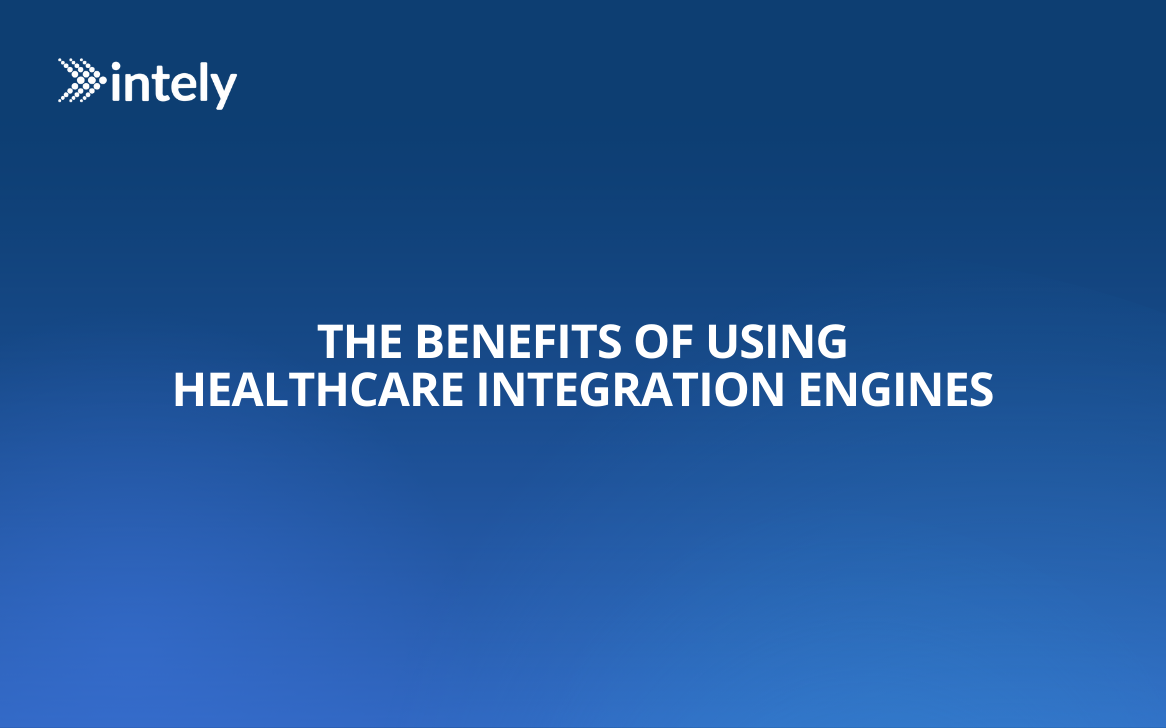What’s New with intely: May Roundup
Here are the highlights of all the content we have posted in the past month. We hope this will give you a sense of what intely is all about, and you'll feel…
Healthcare Integration Engines are changing healthcare for the better. Not only are they helping doctors, patients, and patients' families connect, they are…
.png)

Healthcare Integration Engines are changing healthcare for the better. Not only are they helping doctors, patients, and patients' families connect, they are also helping improve the safety of the healthcare industry.
While integration engines may seem like complicated technology, they are actually designed to make healthcare run more smoothly. Let us discuss the benefits of healthcare integration engines and what they can do for your organization.
Before anything else...
Healthcare integration engines bridge the gap between different technologies in your organization. For example, if electronic medical records are used alongside similar technologies, the integration engine will help all of these systems communicate.
Integration engines are often compared to the central nervous system of the human body. This is because it manages the data by handling internal and external systems. It sends signals to all parts of the IT system of a healthcare organization.
Pretty impressive, right? Which makes you wonder...
As mentioned above, the integration engine acts as the nervous system of the enterprise. First, it receives messages from different systems. Then, it modifies them so other stakeholders can understand them. Lastly, it distributes them using various formats. The formats include HL7, Fast Healthcare Interoperability Resources (FHIR), or via Web Services.
The engines that receive and send out data are called "channels." A channel can be categorized as either an inbound or outbound channel. This means that an inbound channel receives data from a source system. The outbound channel, on the other hand, sends data to a target system.
An integration engine will connect your company to other programs, devices, machines, systems, or networks. Expanding into new territory doesn't have to be daunting with help from an interface engine.
Now that you know what integrations engines are and how they work, let us move on to their benefits.
All kinds of data pass through the integration engines. Data is transformed and normalized for other applications or software. With the use of an integration engine, there is improved access to data.
Data can be shared with other applications using an integration engine. Providers won't have to worry about different data formats.
Healthcare staff will no longer have to spend so much time going through mountains of records. The integration engine organizes all the data inside the organization and shows the users the information they need.
Because the data is transformed and loaded in a clean and structured format, healthcare professionals can easily access their patients' medical history. The data will give them a better idea of what course of treatment is best for their patients.
With integration engine software, healthcare professionals are making data-based clinical decisions. As a result, their patients get the best care, which they deserve.
Intely created a healthcare integration engine that connects applications and automates data integration – Connect by Intely.
Connect by Intely offers a NO-CODE and LOW-CODE approach to integrating with a system of record. We created standard connections and templated workflows to facilitate seamless and repeatable integration.
The best part is...
You can unlock clinical, operational, and financial opportunities by integrating digital health products. Connect by Intely makes these possible.
See how Connect by Intely can help you. Contact us and schedule a demo today.
A healthcare integration engine bridges the gap between different technologies in a healthcare organization. It enables electronic medical records and other systems to communicate, managing data flow and ensuring seamless communication across the organization’s IT systems.
Healthcare integration engines receive messages from various systems, modify them for clarity, and distribute them in formats like HL7, FHIR, or via Web Services. They use "channels" to manage data flow, with inbound channels receiving data from source systems and outbound channels sending data to target systems.
Integration engines improve access to data and resources, automate workflows, enhance provider decision-making, and lead to better patient care. They transform and normalize data for other applications, saving healthcare staff time and improving the quality of clinical decisions.
Integration engines organize all the data within the organization, presenting users with the information they need. This automation reduces the time healthcare staff spend managing records, streamlining operations and improving efficiency.
By transforming and loading data in a clean, structured format, integration engines make it easier for healthcare professionals to access patient medical histories. This improved data access supports better-informed clinical decisions, ultimately enhancing the quality of patient care.